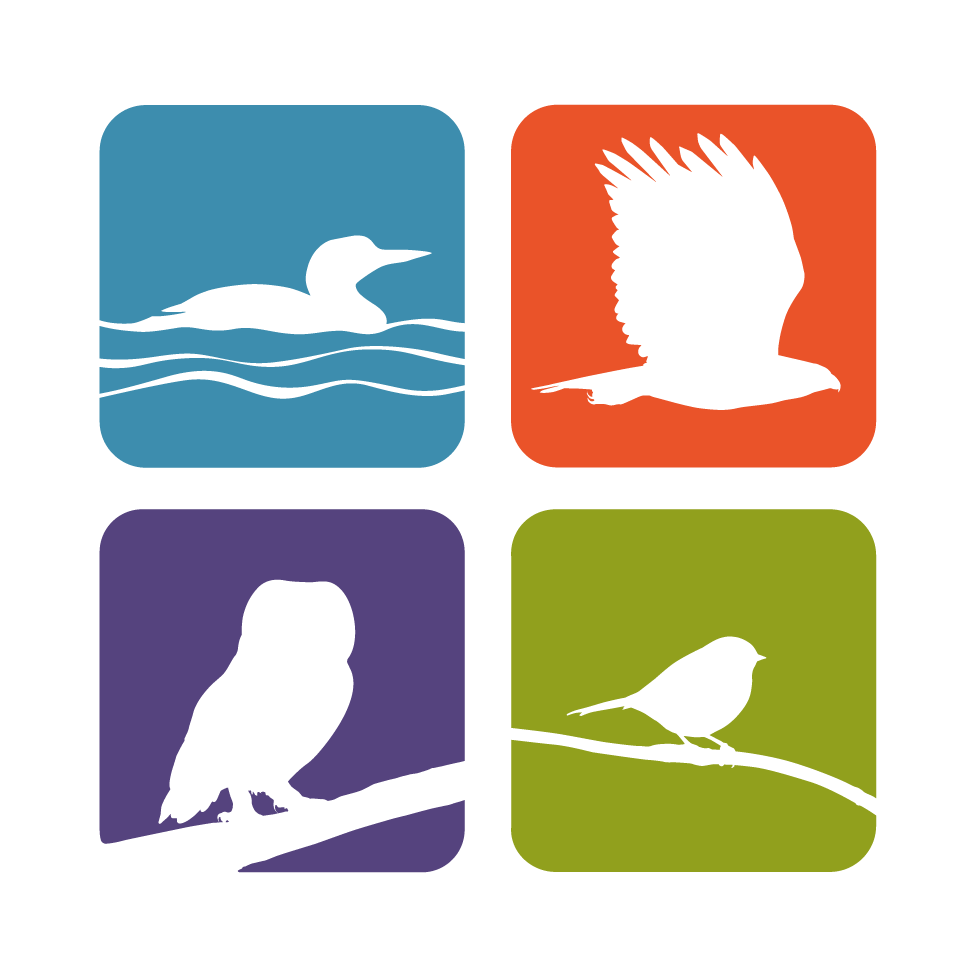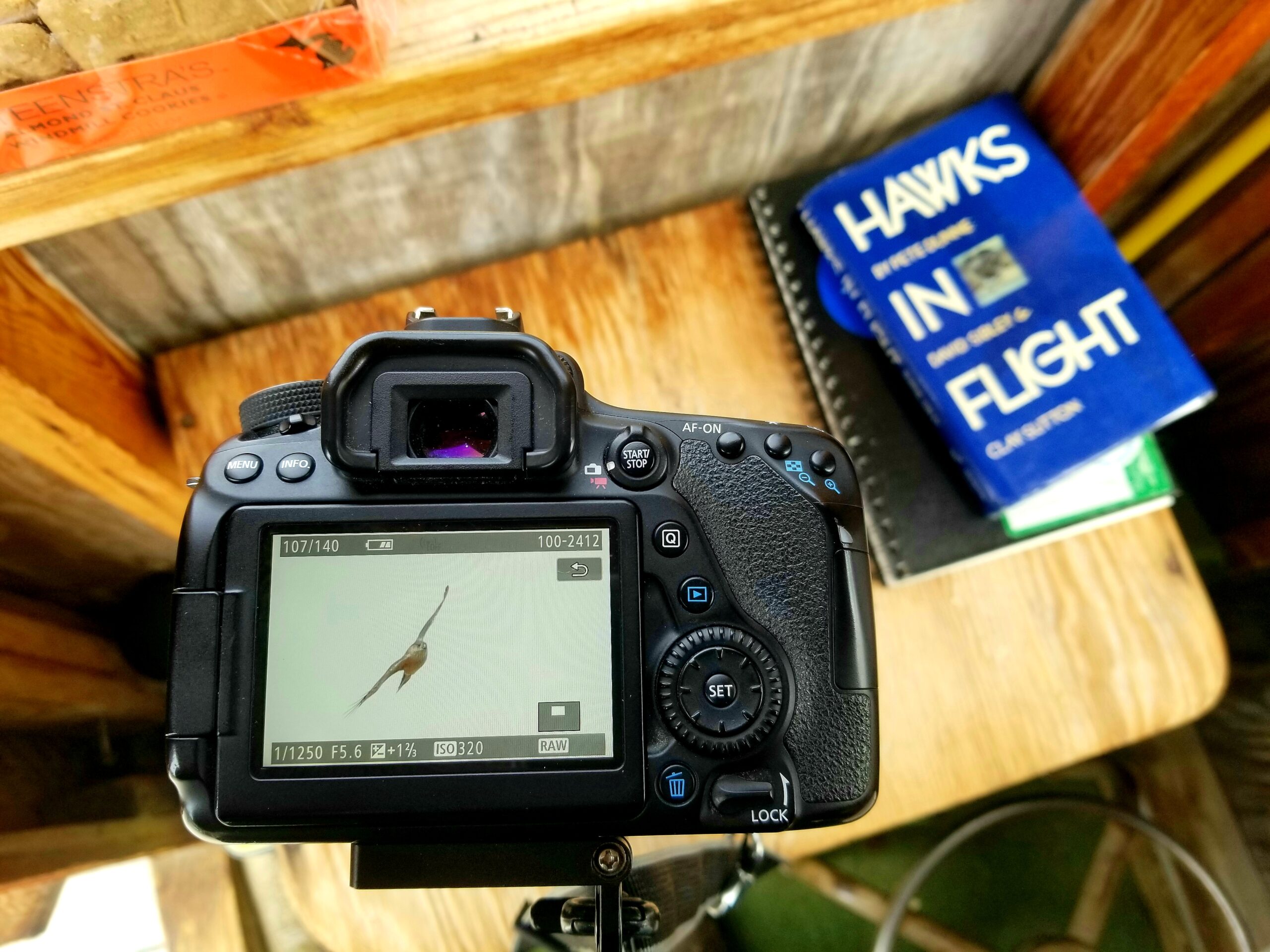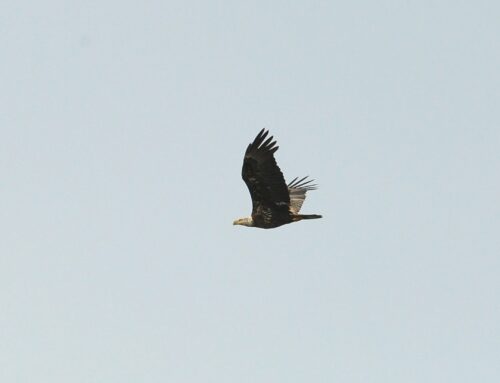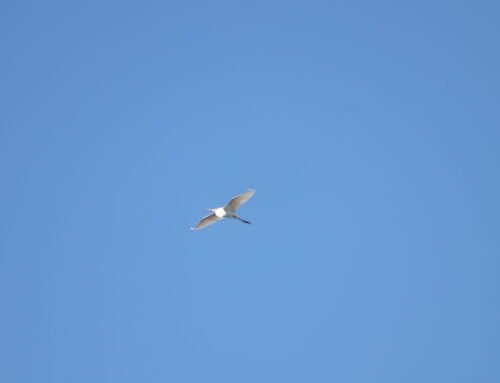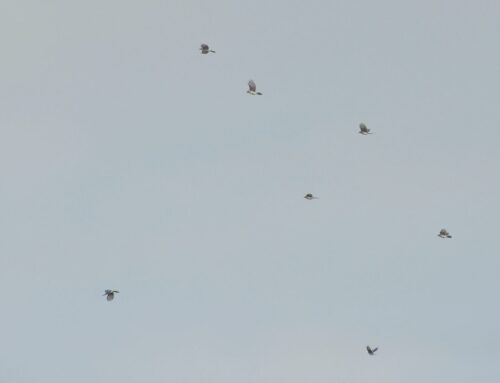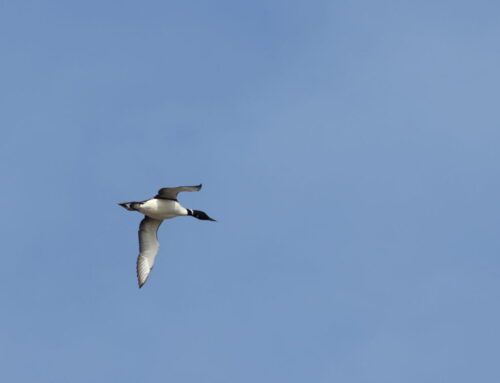I am sure you have heard the expression “a picture is worth a thousand words” but, have you ever asked yourself how much a picture costs? These days, I am just as likely to see a person carrying a camera up to the hawk deck as I am likely to see a person carrying binoculars, and definitely more likely than seeing a person lugging around a spotting scope and tripod. Long lenses have become an integral part of the birder’s arsenal, and here at the hawk deck, I can quickly and easily reference a photo to nail an ID, such as the adult Sharp-shinned Hawk pictured above. Images can also be used for documentation and confirmation of rare species, making your sightings more readily acceptable on platforms such as eBird — a worldwide online database that people can submit their sightings to.
When you start shopping for cameras, binoculars, and spotting scopes, it quickly becomes apparent that birding is not a cheap hobby to get into. For a beginning birder, the expense can be prohibitive. Still, from the numbers and range of cameras and optics I have seen here at Whitefish Point, there does seem to be a price range that meets the needs of every pocketbook. Also, from what I have seen, people appear to be starting with a camera (over binoculars), and perhaps this indicates a shift in what the essential tool in birding might be. From the cameras in our phones to professional camera bodies, photography equipment has advanced to such a point that it is easier than ever before to capture images like an expert. If given a choice between binoculars or a camera, I am not surprised that a camera might win out. With a camera, you have the chance of actually coming home with a photo of your latest lifer rather than just a memory that will fade over time, and having a personal photo gallery of your favorite birds is a testimony to time well spent.
Either way, to answer my question way up top, it’s probably going to cost you a few hundred bucks on the low end to thousands on the high end. If it is something you love, then whatever the price, it is worth it, and on a good day at the hawk deck, you can get a nice return on your investment. In all likelihood, if you get bit by the birding bug, you will end up with the whole kit and kaboodle. If you want my advice, I recommend binoculars first. Learn your birds, get to know them before snapping pictures; you will appreciate your images much more when you actually know what you are taking pictures of.
By now, you might be asking yourself, what about the hawks? What’s going on with migration? Isn’t this blog supposed to be about raptors? Well, long story short, I have done more people watching than hawk watching this week! North winds continued through most of the week, and predicted southerlies weren’t quite as southerly as predicted! The good news is that this past week saw the arrival of the hawk count’s first Osprey and Broad-winged Hawks. The bad news is that the long-range forecast shows a lot of unfavorable weather on its way. Meteorology is never a sure bet, though. As always, your friendly neighborhood hawk counter will stoically man his post and continue to watch the skies for you, waiting for the next glorious wave of winged wonders to arrive.
~ Rich Couse
2021 Spring Hawk Counter
Photo by Rich Couse
You can see live updates for the 2021 Spring Hawk Count on Dunkadoo, read Rich’s weekly blog post, and follow WPBO’s social media (Facebook, Instagram, and Twitter) for hawk count highlights this season.
If you visit WPBO, please practice social distancing while doing so. Although not required, we encourage you to wear masks if you are in close proximity to other people, even if outdoors. If necessary, a capacity limit will be set for how many people can utilize the Hawk Deck simultaneously.

